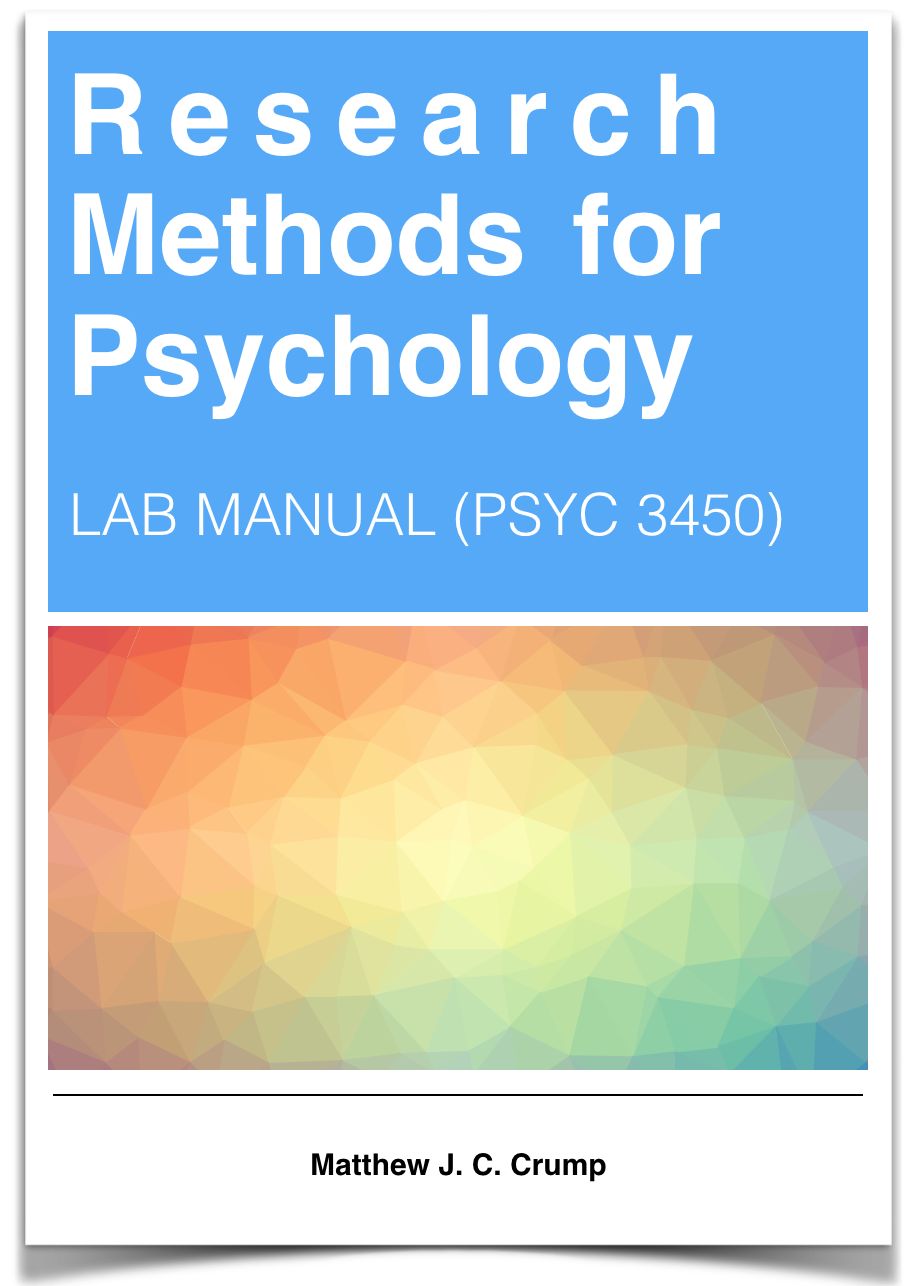
Chapter 10 References
Crump, M. J. C., and Gordon D. Logan. 2010. “Warning: This Keyboard Will Deconstruct Role of the Keyboard in Skilled Typewriting.” Psychonomic Bulletin & Review 17 (3): 394–99. doi:10.3758/PBR.17.3.394.
MacLeod, Colin M. 1991. “Half a Century of Research on the Stroop Effect: An Integrative Review.” Psychological Bulletin 109 (2): 163.
Mehl, Matthias R., Simine Vazire, Nairán Ramírez-Esparza, Richard B. Slatcher, and James W. Pennebaker. 2007. “Are Women Really More Talkative Than Men?” Science 317 (5834): 82–82.
Nairne, James S., Josefa NS Pandeirada, and Sarah R. Thompson. 2008. “Adaptive Memory: The Comparative Value of Survival Processing.” Psychological Science 19 (2): 176–80.
Raz, Amir, Irving Kirsch, Jessica Pollard, and Yael Nitkin-Kaner. 2006. “Suggestion Reduces the Stroop Effect.” Psychological Science 17 (2): 91–95.
Song, Hyunjin, and Norbert Schwarz. 2008. “If It’s Hard to Read, It’s Hard to Do: Processing Fluency Affects Effort Prediction and Motivation.” Psychological Science 19 (10): 986–88.
Stoet, Gijsbert, Daryl B. O’Connor, Mark Conner, and Keith R. Laws. 2013. “Are Women Better Than Men at Multi-Tasking?” BMC Psychology 1 (1): 18.
Stroop, J. Ridley. 1935. “Studies of Interference in Serial Verbal Reactions.” Journal of Experimental Psychology 18 (6): 643–62.
Van Overschelde, James P., Katherine A. Rawson, and John Dunlosky. 2004. “Category Norms: An Updated and Expanded Version of the Norms.” Journal of Memory and Language 50 (3): 289–335.
Yin, Robert K. 1969. “Looking at Upside-down Faces.” Journal of Experimental Psychology 81 (1): 141.